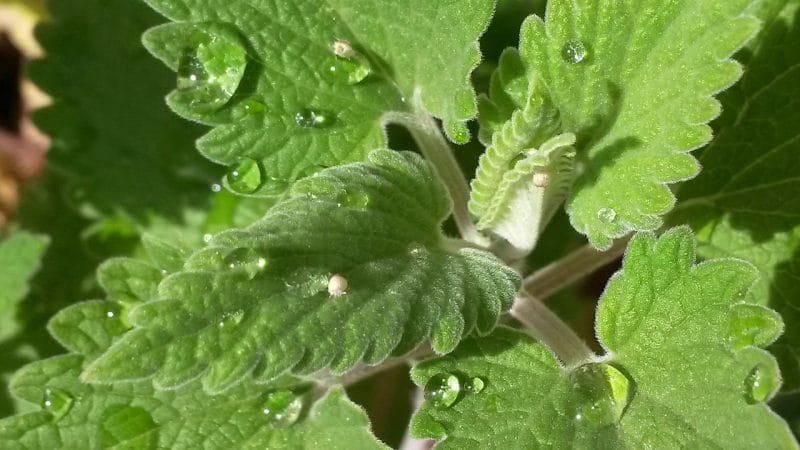If you want to know how to prune catmint, you can simplify the practice into two steps. Even though this perennial is hardy and relatively low-maintenance, you must know how to maintain its foliage. Proper pruning of catmint should encourage healthier growth and prevent the spread of diseases on your plants.
This article will discuss the proper pruning and caring for catmint. This way, you should be ready to propagate catmint and ensure healthy plants. Once you master these practices, you might have the best border plants for personal or commercial use.

How To Cut And Trim Catmint Successfully
Step #1. Preparation
Before pruning catmint, you want to prepare your plant and tools first. Remember that cutting or even trimming any plant can be stressful if the environment isn’t stable. If your region tends to have extreme climates, perhaps you’ll have an easier time growing catmint in the greenhouse.
This way, you can ensure that maintenance practices like pruning won’t end up stressing your plants. More so, don’t forget to sterilize your tools using a solution of bleach and water to prevent the transmission of diseases among plants.
Step #2. Deadheading, cutting, and trimming
Once you prepared the plant and tools, you can start pruning. There are many considerations to this practice, depending on what you’re trying to achieve. For example, you can cut the catmint all the way to the ground in fall if you want to rejuvenate it and regrow early in spring or by the end of winter.
Sometimes light trimming of leggy parts would suffice, but most gardeners cut back the catmint to half its size after the blooming period. You can also trim off the spent flowers on your catmint during the blooming period if you need to extend your plant’s flowering. This will encourage more flowers because you have removed the faded flowers that compete with new growth.
You can deadhead the catmint in spring to early summer. For the second blooming period, it would be best to deadhead again as well to prevent seed production. Remember that this plant self-seeds easily, and pruning is a maintenance practice to keep it controlled.
Growing Catmint
Propagation
Now that you learned how to prune catmint correctly, it’s only right also to know how to grow them to ensure vigorous growth. For starters, you can choose to propagate catmint either from seeds, cuttings, or divisions. Some key pointers to remember is that this plant self-seeds easily, and you can take cuttings at the beginning of summer or divide catmint in spring or fall.
The best time to root this plant is in spring, but you can also grow them in the greenhouse because extreme climates can discourage growth. Choose an area that will provide adequate space because catmints can spread quickly. Remember that these plants are not demanding in terms of growing requirement, so they’ll even thrive amidst drought and other challenges.
Location and maintenance
However, somewhere with full sun is ideal for catmint, and growing zones 3 to 8 would be best for cultivating this plant. Choose a well-draining and fertile soil as well to help the plants establish themselves quicker. You can expect your plants to bloom in summer or early fall under proper conditions.
How do you water and feed catmint? As mentioned earlier, catmints are drought-tolerant, so once established, only water when the plants are showing signs of dehydration. This is also applicable with fertilizing catmints, as it’s not necessary, but you can compost every fall.
Lastly, be confident that you won’t face many severe diseases and problems when growing catmint. The texture and scent of the leaves deter pests and animals. More so, ideal growing conditions should prevent diseases from fungi.
What Is The Difference Between Catmint And Catnip?
It’s probably common for gardeners to get confused between catmint and catnip. And the easiest way to answer your puzzlement is that catmint won’t stimulate cats. However, don’t be surprised that some people consider both plants the same because of shared characteristics.
For those who are looking for an ornamental plant, it’s best to choose catmint. On the other hand, catnip is well-liked and grown to attract cats because of its effect on them. Catnip is even easy to grow and can survive for a long time without much care.
Nonetheless, catmint will also survive challenges once it has established itself. In fact, this plant is prone to becoming weedy because of how fast it spreads. More so, it has eye-catching foliage and blue flowers that will attract humans and pollinators.
Conclusion
Catmint, not catnip, is an easy-to-grow attractive plant to consider for your garden. And if you already have this plant, learn how to prune catmint to help regrow a healthier plant, get better blooms, and prevent it from getting weedy. The activity is as simple as preparing the plant and tools, and you can consider whether you must deadhead, trim, or cut back the plant entirely.
Much like with other flowering plants, catmint will benefit from deadheading and can extend its blooming period. Sometimes, you may also need to trim leggy growths to keep the plant neat and help it regrow more vigorously. Lastly, you can cut back the plant in half after the growing period to encourage a healthier plant for the next season.
